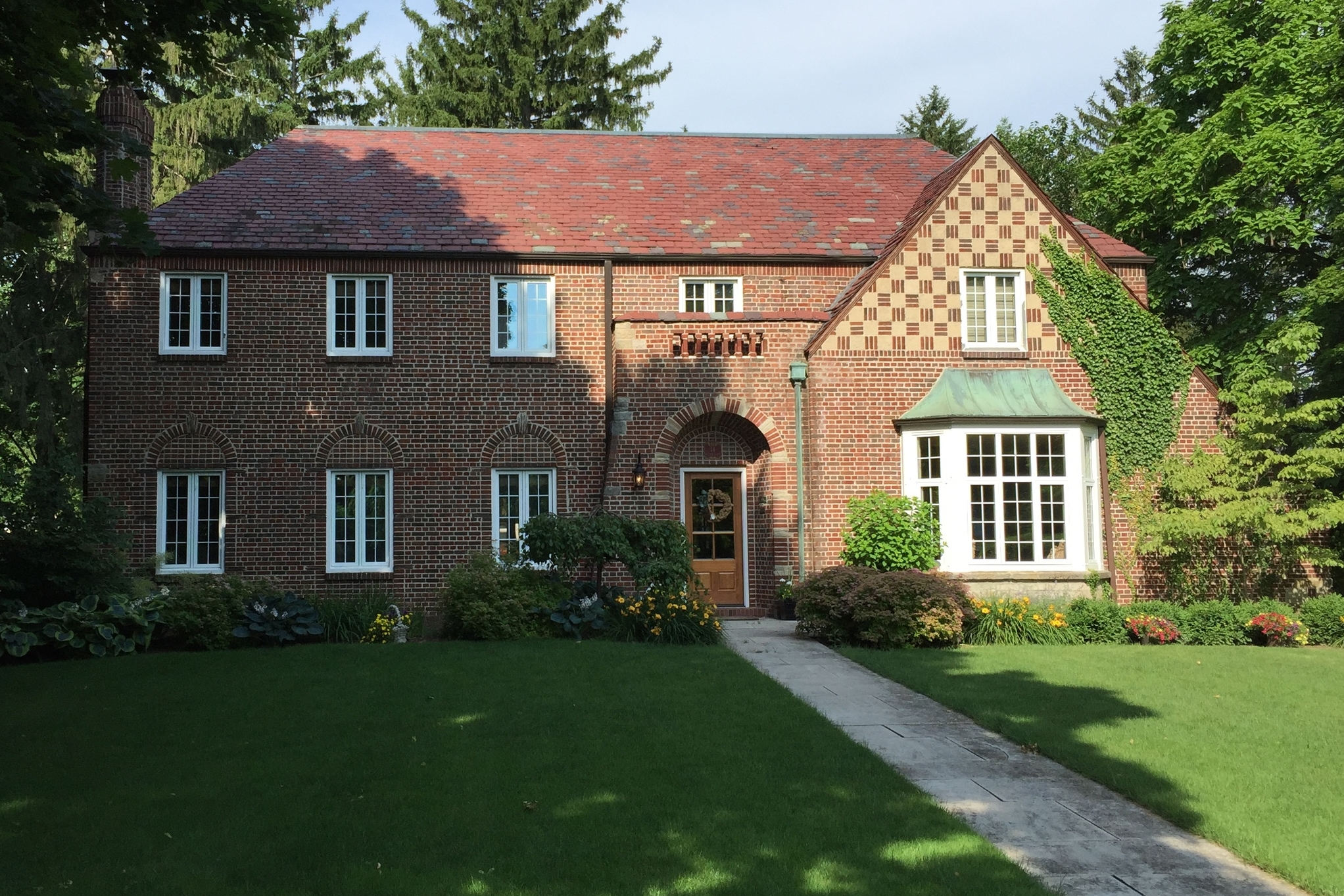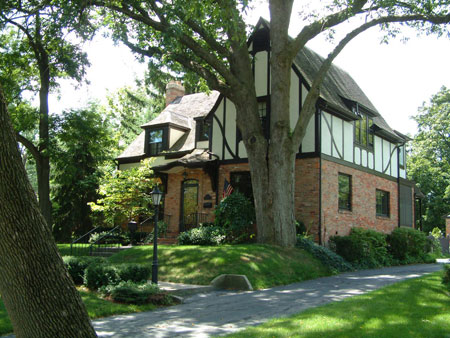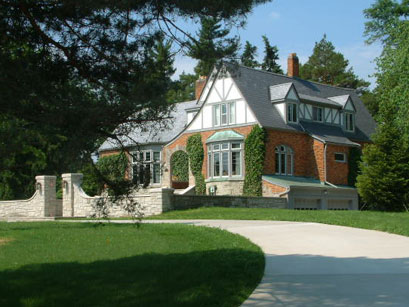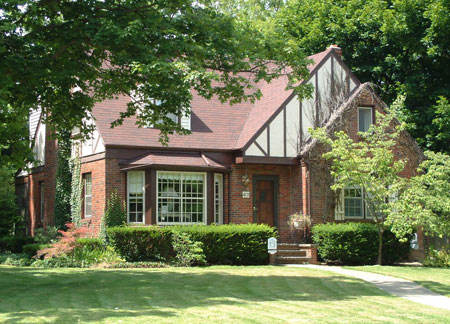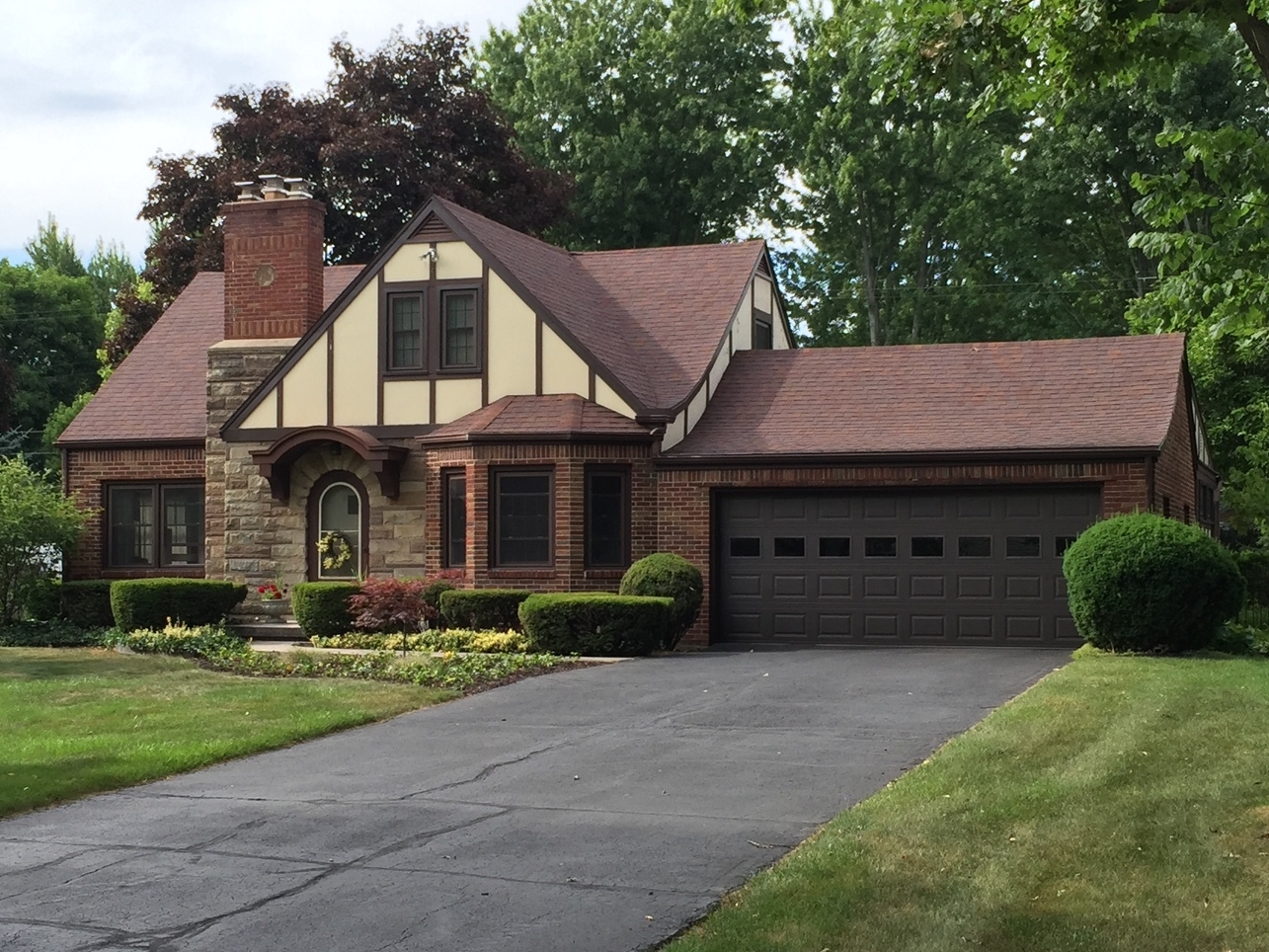Oliver House, 219 North Scott Street, 1937
Tudor Revival
1910 to 1950
The Tudor Revival can best be understood as an outgrowth of the British Arts and Crafts movement and the Queen Anne style in an era that preferred more horizontal structures, greater historical accuracy and aesthetic coherence. While the urban and eclectic Queen Anne faded from popularity around 1910, the more historically coherent suburban Tudor Revival replaced it, reaching its peak of popularity in the 1920s and 1930s, when it rivaled the popularity of the Colonial Revival.
Maynard-Campbell House, 14 Maumee Courth, 1927
Click here to read an essay about the Maynard-Campbell House by Peter Barr
The Tudor Revival style shares a number of features and qualities with the Queen Anne. First, both the Tudor style and the Queen Anne are somewhat misnamed since both derive from a half-timber style of architecture that was popular in England during the era sometimes referred to collectively as the Jacobethan period [that included the last Tudor ruler, Queen Elizabeth I (1558-1603), and the first King James (1603-1625)]. Moreover, both often feature pseudo half-timbering that presents a skeleton of darkly colored beams that was structural in the original sixteenth-century buildings but merely decorative on modern, balloon-frame structures. In addition, both the Tudor and the Queen Anne styles emphasize asymmetry as well as a wide variety of surface materials, which provided architects and homeowners with endless possibilities in terms of individual interpretations.
The Tudor Revival, the Colonial Revival and the Craftsman became popular during the early automobile era, after 1910, when Henry Ford opened his first moving assembly-line plant in Highland Park, Michigan. This new method of industrial production had been used as early at 1906 at the Lamb Fence Company factory in Adrian and, at Ford, resulted in the steady decline in the cost of Ford automobiles from a high of $850 in 1908, to a low of $260 in 1926. These British styles also coincided with a period of political isolationism, when White Anglo-Saxon Protestant looked to English history for its style references.
They also depended on an innovation that was seemingly antithetical to the anti-industrial aesthetic of the Arts and Crafts Movement: pre-cut kit houses available from catalogs such as Sears and Aladdin. Not surprisingly, homes in these styles are often found in early automobile suburbs—relatively affordable, shallow lots located “in the country,” just beyond a comfortable walking distance of factories and increasingly obsolete commercial centers, train stations and trolley car stops. Suburban homes in these styles often have carports or adjacent garages instead of horse stables, which had required deeper lots to keep the smells and pests of horses at a comfortable distance.
